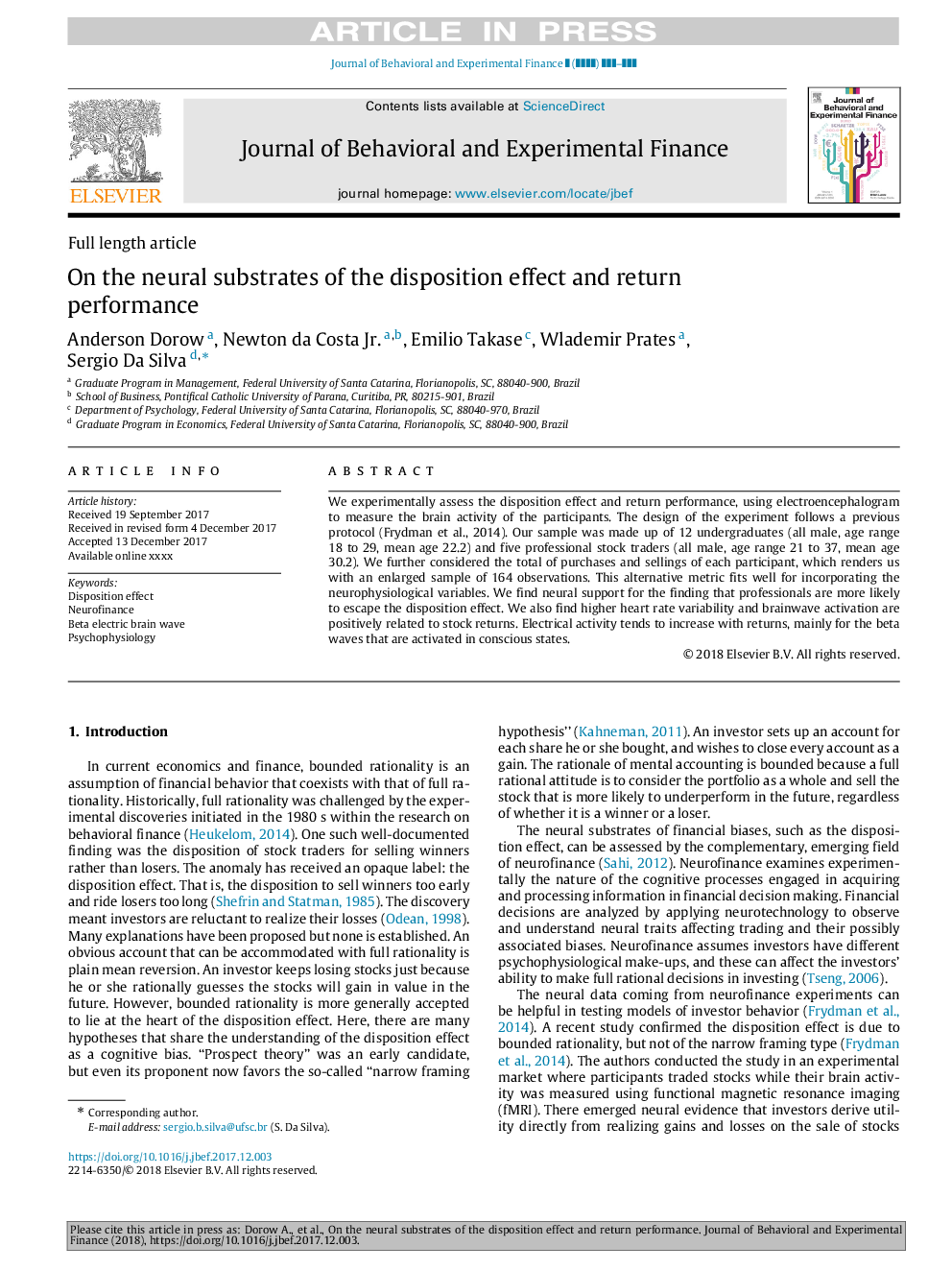| Article ID | Journal | Published Year | Pages | File Type |
|---|---|---|---|---|
| 7296635 | Journal of Behavioral and Experimental Finance | 2018 | 6 Pages |
Abstract
We experimentally assess the disposition effect and return performance, using electroencephalogram to measure the brain activity of the participants. The design of the experiment follows a previous protocol (Frydman et al., 2014). Our sample was made up of 12 undergraduates (all male, age range 18 to 29, mean age 22.2) and five professional stock traders (all male, age range 21 to 37, mean age 30.2). We further considered the total of purchases and sellings of each participant, which renders us with an enlarged sample of 164 observations. This alternative metric fits well for incorporating the neurophysiological variables. We find neural support for the finding that professionals are more likely to escape the disposition effect. We also find higher heart rate variability and brainwave activation are positively related to stock returns. Electrical activity tends to increase with returns, mainly for the beta waves that are activated in conscious states.
Keywords
Related Topics
Social Sciences and Humanities
Economics, Econometrics and Finance
Economics, Econometrics and Finance (General)
Authors
Anderson Dorow, Newton Jr., Emilio Takase, Wlademir Prates, Sergio Da Silva,
